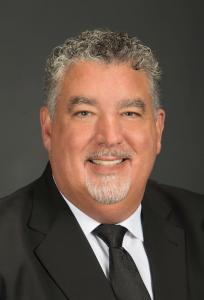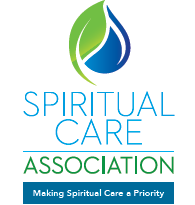Addressing the Mental Health Impact of the COVID Pandemic on Healthcare Workers
No. 4 in Series: Spiritual Care Association Committed to Developing Resources, Tools for Chaplains to Become Better Educated in Mental, Behavioral Health Issues
NEW YORK, NEW YORK, UNITED STATES, June 23, 2022 /EINPresswire.com/ -- In the early days of the COVID pandemic, healthcare workers were hailed as heroes by grateful friends and neighbors in cities and towns across the nation. But after multiple waves of infection, rampant medical misinformation, and over a million American lives lost, the appreciation and gratitude have faded. As COVID grinds on into year three, the burden of the pandemic has taken its toll on the physical, emotional, and mental wellbeing of healthcare workers. They have been overwhelmed by the staggering number of cases, frustrated by the lack of PPE and other essential medical equipment, dogged by the fear of catching the disease and transmitting it to loved ones, and they have faced hostility, abuse, and acts of violence when the disease and its treatments became politicized. At the time of this writing, the CDC’s COVID Tracker website records almost 940,00 cases of COVID infections in healthcare workers in the country since the beginning of the pandemic and over 2,600 deaths (1).Healthcare workers suffer from the same mental health issues as other members of society as a result of the pandemic. Many report increased levels of stress, anxiety, exhaustion, and loss of sleep, and are at increased risk for substance use and suicidal ideation (2). Even before the pandemic, a survey of physicians found that one out of 15 had thoughts of taking their own life (3). Many of the pandemic’s impacts on healthcare workers will be felt for years to come. Elsevier recently released its Clinician of the Future Report 2022, in which nearly 3,000 clinicians from 111 countries imagine what healthcare will look like in the future. The report finds that clinicians today are stretched thin with competing responsibilities, and it details many ways in which they believe work pressures will increase in the next 10 years. Respondents identified clinician wellbeing as a priority crucial to overcoming burnout and workforce shortages, with only 57% reporting a good work-life balance (4).
Significant numbers of healthcare workers are now planning to leave their profession all together (5). One of the main reasons they cite in study after study is burnout. Before the pandemic, the National Academy of Medicine found that burnout had reached “crisis levels,” with 35-54% of nurses and physicians and 45-60% of medical students and residents reporting symptoms (6). In recent recognition of this crisis, a Surgeon General’s Advisory (SGA) has been published titled Addressing Health Worker Burnout (7). This advisory details a range of societal, cultural, structural, and organizational factors that contribute to burnout among healthcare workers at all levels. It defines burnout as “an occupational syndrome characterized by a high degree of emotional exhaustion and depersonalization (i.e., cynicism), and a low sense of personal accomplishment at work” (SGA p.7).
Feelings of burnout in healthcare workers can be heightened by moral distress. The Advisory notes that moral distress in healthcare can occur “when health workers know the best health care decision to make, but feel helpless and unable to act due to limited resources or circumstances beyond their control” (SGA p.8). Sustained moral distress can lead to moral injury, which has been linked to feelings of profound guilt, shame, anger, and other psychological impacts (8). Some individuals have also suffered moral injury from false accusations and misinformation spread on the internet that alleges wrongdoing and malicious intent by healthcare providers and biomedical scientists.
The national shortage of healthcare providers may directly impact quality and access of care to all Americans as well as increasing stress and anxiety for those still on the job. A recent American Medical Association-led study found that one in 5 physicians and two in 5 nurses intend to quit the practice of medicine (5). The Surgeon General’s Advisory estimates that half a million nurses are ready to retire by the end of this year, while over a million new nurses are needed to meet demand. It also predicts a shortage of up to 139,000 physicians by 2033, mostly in primary care and rural communities. Within 5 years, the Advisory estimates the nation will face a shortage of 3 million low-paid health workers in all sectors (SGA p.8). These shortages will cause untold stresses on the healthcare workers that remain.
As experts in our fields of spiritual care and mental health, we are convinced that well-educated professional healthcare chaplains and other properly trained spiritual care providers can play an important role in the healing of healthcare workers who are suffering mental and emotional distress due to the pandemic. As we have written elsewhere, “the scope of practice of board-certified chaplains explicitly states that they provide spiritual and emotional support for the health care providers with whom they work” (9). The Spiritual Care Association is committed to developing resources and tools chaplains need to be become better educated around issues of mental health.
References
(1) https://covid.cdc.gov/COVID-data-tracker/#health-care-personnel_healthcare-deaths
(2) Uphoff, E., Lombardo, C., Johnston, G., et al. (2021). Mental health among healthcare workers and other vulnerable groups during the COVID-19 pandemic and other coronavirus outbreaks: A rapid systematic review. PLOS1 16(8). https://doi.org/10.1371/journal.pone.0254821
(3) Shanafelt, T. D., Dyrbye, L. N., West, C. P., Sinsky, C.,Tutty, M., Carlasare, L. E., Wang, H., & Trockel, M. (2021). Suicidal ideation and attitudes regarding help seeking in US physicians relative to the US working population. Mayo Clinic proceedings, 96(8): 2067–2080. https://doi.org/10.1016/j.mayocp.2021.01.033
(4) https://www.elsevier.com/connect/clinician-of-the-future
(5) Christine A. Sinsky, Roger L. Brown, Martin J. Stillman, Mark Linzer, COVID-Related Stress and Work Intentions in a Sample of US Health Care Workers, Mayo Clinic Proceedings: Innovations, Quality & Outcomes, Volume 5, Issue 6, 2021, Pages 1165-1173,ISSN 2542-4548, https://doi.org/10.1016/j.mayocpiqo.2021.08.007
(6) National Academies of Sciences, Engineering, and Medicine, Committee on Systems Approaches to Improve Patient Care by Supporting Clinician Well-Being. (2019). Taking Action Against Clinician Burnout: A Systems Approach to Professional Well-Being. National Academies Press. Retrieved from https://nam.edu/systems-approaches-to-improve-patient-care-by-supporting-clinician-well-being/
(7) https://www.hhs.gov/surgeongeneral/priorities/health-worker-burnout/index.html
(8) Williamson, V., Murphy, D., Phelps, Forbes, & Greenberg, N. (2021). Moral injury: the effect on mental health and implications for treatment, The Lancet Psychiatry, 8(6): 453- 455.
(9) https://doi.org/10.1016/j.jemep.2019.04.011
Molly Sabala
HealthCare Chaplaincy Network
+1 212-644-1111
email us here
Visit us on social media:
Facebook
Twitter
LinkedIn
Legal Disclaimer:
EIN Presswire provides this news content "as is" without warranty of any kind. We do not accept any responsibility or liability for the accuracy, content, images, videos, licenses, completeness, legality, or reliability of the information contained in this article. If you have any complaints or copyright issues related to this article, kindly contact the author above.



